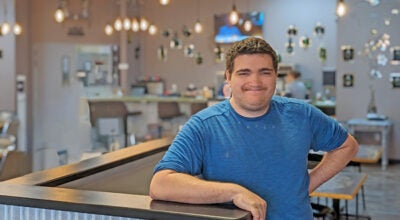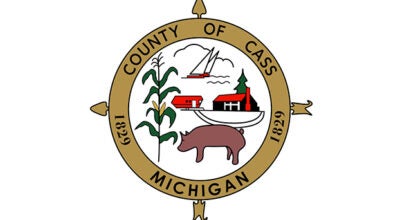Final action at next council meeting on state-mandated energy surcharge
Published 9:06 am Tuesday, August 11, 2009
By JOHN EBY
Dowagiac Daily News
Dowagiac City Council led off its meeting Monday night with a presentation by Franklin Energy of Lansing.
Later in the proceedings the council introduced an electric rate ordinance to institute rates authorized by the Michigan Public Service Commission to fund a state-mandated energy optimization plan and to reinstitute a fuel adjustment factor.
Franklin will be responsible for managing energy optimization, or EO, for Dowagiac to satisfy P.A. 295, which was signed into law Oct. 6, 2008, and specifically applies to utilities.
P.A. 295 requires that at least 10 percent of electricity furnished to customers be from renewable energy resources by 2015 by developing a REP, or renewable energy plan.
“This past fall the state passed a law that said everybody needed to put in energy optimization to reduce consumption,” City Manager Kevin Anderson said. “We developed some plans, we held some public hearings on those plans and we got PSC certification of what our rates should be. We have been cooperating with other municipalities throughout the state and we’re jointly going to hire Franklin Energy Services to oversee the program.”
Ironically, considering that he’s been in the field for 23 years, working for nine utilities in six states, mostly recently seven years in Oregon, Tom Kovalak of Lansing got his start in Cassopolis in 1985 with Fruit Belt, now Midwest Energy Cooperative.
Draft plans were due to the PSC by April 3 and posted on the city’s Web site, according to City Engineer Christopher Bolt. A public hearing took place May 11. The PSC subsequently issued an order approving both plans on July 1 and authorizing surcharges be collected to fund the program outlined in a 12-page EO and a companion 24-page “portfolio.”
Dowagiac’s EO programs were developed to serve all customer classes, including residential low-income. The City of Dowagiac 2009 plan is based on allocating approximately 5 percent of its EO budget to low-income program, 20 percent to residential, 66 percent to commercial and industrial and 9 percent to evaluation and administration.
Program allocations will be revised on an annual basis to continue meeting P.A. 295 goals.
All city residents will be eligible for the efficient lighting program, refrigerator/freezer turn-in and recycling program. high-efficiency appliances and electronics program, high-efficiency HVAC equipment and residential education service.
The city expects to save 239,500 kilowatt hours this year, 359,200 kwh in 2010, 518,500 kwh in 2011 and 691,300 kwh in 2012.
“You’re going to have to raise your rates by putting that surcharge on there to collect that back from the customers to fund this program,” Kovalak said.
The new rates are $.001 per kwh per residential meter, $7.83 per meter per month for secondary meters and $237.51 per meter per month for primary meters, of which Anderson said there are only five at Ameriwood, Dowagiac Middle School and Mennel Milling.
“Your budget’s small, as you might imagine for a small utility like this,” Kovalak said, “where you’re going to have $4,000 for recycling, your $7,000 and $6,000 budgets for your commercial and industrial. Your residential lighting, you have 643 CFLs” which will be distributed on a first-come basis. “Those are the little twisty bulbs which go from 100 watts down to 23 or 60 down to 13.”
On the commercial-industrial side, Kovalak said, “We have engineers on staff who will go out and meet with your customers and other utility customers and walk them through how this program works and paybacks for why they should participate. Most of the projects we’re seeing throughout the state have anywhere from an eight-month to a two-year payback, tops. These incentives that you will be offering really buy down the costs of putting in these energy-efficient measures and saving your businesses money.”
“We’ll also have a tracking system that we’ll use to enter all the data. We’ve been doing this for the City of Lansing,” Kovalak said. “It shows what is spent and the names of customers who are participating.”
“The appliance turn-in program is kind of an interesting one for those people who have what I call the six-pack refrigerator in their garage or their basement. It costs them $10 to $20 a month in some cases, depending on how old it is to keep a six-pack cold or a bag of ice in the freezer. They’re energy hogs. You’ll pay customers $20 to get those out of there to be sent to Livonia, taken apart into millions of pieces and recycled. It will be good for the environment, and also energy savings. JACO is the company we subcontracted with to administer that for us. They’ll pick them up” with the freon still inside.
“The only customer responsibility is for access to get into the garage or basement and that the refrigerator actually works,” Kovalak said. “They don’t want people going to the dump and getting refrigerators for a free $20. As far as actual money to customers, we will be doing that. We will send a report every month as customers participate and say, ‘This industry has participated. It qualifies for $2,000 for its incentive. Please proceed and pay them that. Most utilities are doing checks. The other option is a bill credit.”
Kovalak called lighting “the proverbial low-hanging fruit on energy-efficiency projects. We just kicked off the Holland program two weeks ago and I don’t think their budget of $150,000 for incentives will last through the month. That’s how many customers have participated and 98 percent of those projects are lighting. Taking out 400-watt lights and replacing them with a fluorescent fixture that has six or eight tubes. Those are all paying for themselves. If it’s a 18- to 24-hour operation, it will pay for itself in less than a year – usually about eight months. That’s what we’re going to see first. As the years progress in this program over the next three years, it will get deeper into the HVAC. There will be money for efficient heating and cooling, which is usually the biggest part of a person’s bill. Old furnaces, better air conditioning.”
Howard Hall, who may or may not file for mayor today, asked how much the city will collect the first year.
“Is there going to be a mad rush for lightbulbs?” Hall queried.
“To be fully honest,” Kovalak said, “all of these programs, no matter what customer class, it is first-come, first served. If you’re giving out 643 CFLs,” when they’re gone, they’re gone. “When I moved here from Oregon, Oregon charged much more than what Michigan is going to charge. It really is the customer’s responsibility to learn about the programs and limited budgets.”
“And how does that exchange take place?” Hall followed up.
Some municipalities have Web sites where customers can enter their account number and have bulbs shipped to their house.
“The City of Niles is actually buying in bulk and having them at their office. When someone walks in to pay their bill or comes up to the desk and says, ‘I’ve heard about those, I’d like to get two light bulbs,’ they hand them across the desk. It depends how the City of Dowagiac does it.”






